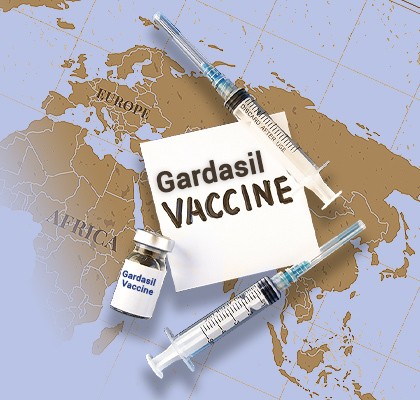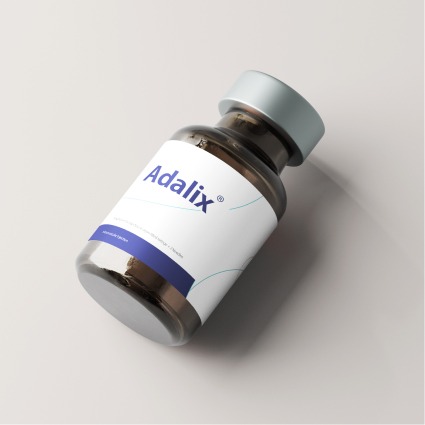Introduction
Gardasil vaccination is a highly effective way to prevent human papillomavirus (HPV) infection and its associated diseases, including cervical cancer, vulvar cancer, vaginal cancer, anal cancer, and genital warts. HPV is the most common sexually transmitted infection (STI) in the world, and it is estimated that over 80% of people will be infected with HPV at some point in their lives.
Gardasil vaccination is recommended for all girls and boys aged 9 to 14 years old. It can be given to girls and boys up to the age of 26 years old, but it is most effective when given before the onset of sexual activity.
Gardasil vaccination is widely available in Central and Eastern Europe, but there are still some challenges to increasing uptake rates. These challenges include vaccine hesitancy, cost, and lack of access to vaccination services.
Despite these challenges, there have been some significant advancements and achievements in Gardasil vaccination in Central and Eastern Europe in recent years. For example, in 2021, the Czech Republic became the first country in the region to introduce HPV vaccination for boys into its national immunization program.
Current Situation of Gardasil Vaccination in Central and Eastern Europe
The current situation of Gardasil vaccination in Central and Eastern Europe varies from country to country. In some countries, such as the Czech Republic, Slovenia, and Hungary, HPV vaccination coverage rates are high. However, in other countries, such as Bulgaria, Croatia, and Romania, coverage rates are lower.
There are a number of factors that contribute to the variation in HPV vaccination coverage rates in Central and Eastern Europe. These factors include:
- Vaccine hesitancy: Vaccine hesitancy is a major barrier to HPV vaccination in Central and Eastern Europe. Some people are hesitant to vaccinate their children against HPV because they believe that the vaccine is unsafe or that it promotes sexual activity.
- Cost: The cost of the Gardasil vaccine can be a barrier to vaccination, especially in low-income countries. In some countries in Central and Eastern Europe, the vaccine is not covered by national health insurance programs.
- Lack of access to vaccination services: In some rural areas of Central and Eastern Europe, there is limited access to vaccination services. This can make it difficult for children and adolescents to get vaccinated.
Latest Advancements and Achievements in Gardasil Vaccination in Central and Eastern Europe
Despite the challenges, there have been some significant advancements and achievements in Gardasil vaccination in Central and Eastern Europe in recent years. These include:
- Introduction of HPV vaccination for boys: In 2021, the Czech Republic became the first country in Central and Eastern Europe to introduce HPV vaccination for boys into its national immunization program. This is a significant step forward, as HPV vaccination can protect both boys and girls from HPV-related diseases.
- Increased awareness of HPV and the benefits of vaccination: There has been a growing awareness of HPV and the benefits of vaccination in Central and Eastern Europe in recent years. This is due in part to public education campaigns and the work of non-profit organizations.
- Expansion of vaccination programs: Some countries in Central and Eastern Europe have expanded their HPV vaccination programs to include more children and adolescents. For example, in 2020, Bulgaria expanded its HPV vaccination program to include girls aged 11 to 14 years old.
Advantages of Gardasil Vaccination in Central and Eastern Europe
Gardasil vaccination has a number of advantages for Central and Eastern Europe. These advantages include:
- Reduced risk of HPV-related diseases: Gardasil vaccination can significantly reduce the risk of HPV-related diseases, including cervical cancer, vulvar cancer, vaginal cancer, anal cancer, and genital warts.
- Improved overall health: By reducing the risk of HPV-related diseases, Gardasil vaccination can improve the overall health of women and men in Central and Eastern Europe.
- Reduced healthcare costs: Gardasil vaccination can help to reduce healthcare costs by preventing HPV-related diseases.
The Future of HPV with and without Gardasil Vaccination in Central and Eastern Europe
The future of HPV in Central and Eastern Europe will depend on a number of factors, including the uptake rates of Gardasil vaccination. If HPV vaccination coverage rates remain low, the burden of HPV-related diseases in Central and Eastern Europe is likely to increase.
However, if HPV vaccination coverage rates increase, the burden of HPV-related diseases in Central and Eastern Europe can be significantly reduced. This would have a major impact on the overall health of women and men in the region.
Without Gardasil vaccination, the following could happen:
- The incidence of HPV-related diseases, such as cervical cancer, will increase.
- The mortality rate from HPV-related diseases will increase.
- The healthcare costs associated with HPV-related diseases will increase.
- The quality of life of women and men with HPV-related diseases will decrease.
With Gardasil vaccination, the following could happen:
- The incidence of HPV-related diseases will decrease.
- The mortality rate from HPV-related diseases will decrease.
- The healthcare costs associated with HPV-related diseases will decrease.
- The quality of life of women and men with HPV-related diseases will improve.
How to Increase Gardasil Vaccination Coverage Rates in Central and Eastern Europe
There are a number of things that can be done to increase Gardasil vaccination coverage rates in Central and Eastern Europe. These include:
- Addressing vaccine hesitancy: Public education campaigns and the work of non-profit organizations can help to address vaccine hesitancy and increase awareness of the benefits of HPV vaccination.
- Making the vaccine more affordable: Governments and non-profit organizations can work together to make the Gardasil vaccine more affordable for families. This could be done by subsidizing the cost of the vaccine or by providing financial assistance to families who cannot afford to pay for the vaccine.
- Improving access to vaccination services: Governments and non-profit organizations can work together to improve access to vaccination services. This could be done by providing vaccination services in schools, community centers, and other convenient locations.
Role of Opal Bio Pharma in Increasing Gardasil Vaccination Coverage Rates in Central and Eastern Europe
Opal Bio Pharma is a leading biopharmaceutical company in Oman that develops and manufactures biosimilar vaccines, medicines, and treatment methods. Opal Bio Pharma is committed to increasing Gardasil vaccination coverage rates in Central and Eastern Europe.
Opal Bio Pharma is working with governments and non-profit organizations in Central and Eastern Europe to make the Gardasil vaccine more affordable and accessible. Opal Bio Pharma is also supporting public education campaigns and the work of non-profit organizations to address vaccine hesitancy.
Conclusion
Gardasil vaccination is a highly effective way to prevent HPV infection and the associated diseases. Increasing HPV vaccination coverage rates in Central and Eastern Europe is essential to reducing the burden of HPV-related diseases and improving the overall health of women and men in the region.
Opal Bio Pharma is committed to playing a role in increasing Gardasil vaccination coverage rates in Central and Eastern Europe. By working with governments and non-profit organizations, Opal Bio Pharma is helping to make the Gardasil vaccine more affordable and accessible and to address vaccine hesitancy.

